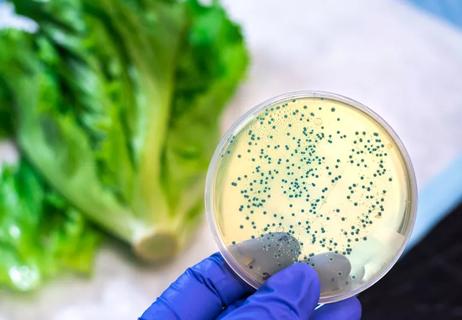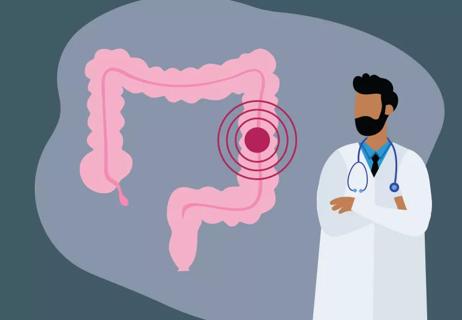Symptoms can be similar, but affect your body in distinct ways

If you have the same reaction to a certain food every time you eat it — like an upset stomach or diarrhea — you may think you have a food allergy. But it’s more likely you have a food intolerance, which affects an estimated 20% of the U.S. population.
Advertisement
Cleveland Clinic is a non-profit academic medical center. Advertising on our site helps support our mission. We do not endorse non-Cleveland Clinic products or services. Policy
The key is understanding the differences between a food intolerance and a food allergy, so you’re better prepared to handle the way certain foods affect your body. So, what’s the difference?
Registered dietitian Sharon Jaeger, RD, says food intolerances cause unpleasant and frustrating symptoms like gastrointestinal distress, while the symptoms of food allergies are likely to be more severe and sometimes even life-threatening.
“Symptoms of an allergy and an intolerance can appear similar, but one clear difference is how they affect your body,” Jaeger says. “An allergy is an immune system response, while isolated digestive issues usually point to a food intolerance.”
She breaks down what you need to know about both.
“When you have a food allergy, your immune system mistakes a protein or other ingredient in food as a threat,” Jaeger explains. Eight types of food account for about 90% of all food allergies:
Food allergies can develop in adults, so it’s possible that you’ve gone your whole life enjoying shrimp only to have a reaction one day seemingly out of the blue.
After you consume a food you’re allergic to, symptoms usually happen quickly — within 30 minutes to two hours. “When you eat the offending food, an immediate immune response is triggered,” Jaeger says. “This type of reaction can be fatal if it’s not treated immediately with an epinephrine or adrenaline injection.”
Advertisement
If, for example, you’re allergic to peanuts or soy, ingesting even a small amount may lead to a rapid, severe reaction called anaphylaxis. This can include:
Sometimes, you’ll hear people say a certain food “doesn’t agree” with them. Maybe milk products give them gas, so they avoid dairy altogether. But what does that mean, and what causes it?
A food intolerance happens when your body can’t properly break down a certain food or ingredient. Lactose intolerance, for example, is the result of an enzyme deficiency that prevents your body from properly breaking down lactose, a milk sugar.
“Your symptoms may be inconvenient and uncomfortable, but they’re not life-threatening,” Jaeger explains. Gastrointestinal symptoms of a food intolerance usually kick in within a few hours and include:
Food intolerance and food sensitivities are often lumped into the same category, and you may hear them discussed that way. But Jaeger separates them out.
With food sensitivity, “It is an immune response, but it is a much slower response than an allergy, and it often is due to some sort of imbalance in your gastrointestinal tract,” she says.
Food sensitivity symptoms can mimic mild allergic reactions:
Symptoms may not always be immediate. In fact, it could take up to three days for issues to appear.
“This is often due to some sort of imbalance of good versus bad bacteria in your gastrointestinal tract,” Jaeger explains. “The lag time can make it much harder to link symptoms with a specific food.”
Celiac disease can cause similar symptoms, but it’s neither a food allergy nor a food intolerance.
“It’s actually an autoimmune disorder triggered by gluten, a protein found in grains like wheat, barley and rye,” Jaeger explains. “For people who have celiac disease, eating even the smallest amount of gluten can actually cause damage to the small bowel.”
But — and here’s where it can get confusing — you can have a gluten intolerance without having celiac disease or a wheat allergy. In this case, eating gluten may make you feel bloated, gassy or tired, but it won’t cause an allergic reaction or damage to your gastrointestinal (GI) tract.
More research is needed, but studies show that there’s compelling evidence that kids are at a higher risk for food allergies if one or both of their parents have them.
Advertisement
Food intolerances and sensitivities can be genetic or can develop over time.
Food allergies often become apparent early in childhood, especially from foods like milk, nuts, eggs and soy. Sometimes, though, these allergies can develop later in life, so this isn’t always a sure bet. (Research suggests that early introduction of potentially allergenic foods may help prevent peanut allergies in high-risk infants. If you’re concerned, speak with your allergist.)
Intolerances and sensitivities can also develop or worsen with age. Again, lactose intolerance is a common example: “As you get older, your body may produce less of the enzyme that helps digest lactose in dairy products,” Jaeger explains.
Your healthcare provider can help you find out whether you have an allergy or intolerance and then work with you to establish a plan to help control your symptoms.
“If your symptoms are keeping you from your activities of daily living — like if you’re chronically having to plan where you’re going and how long you’ll be gone because you’re going to need a bathroom — it’s time to see a professional,” Jaeger advises. “For many of us, we have these symptoms for so long that we start to think they’re normal.”
Advertisement
Here are some of the ways that food allergies, intolerances and sensitivities are diagnosed.
Allergy skin testing can identify your body’s reaction to allergens. A blood test can pinpoint elevated levels of allergy antibodies that your immune system produces.
But determining the cause of food intolerance or sensitivity isn’t an exact science. Aside from the hydrogen breath test to diagnose lactose intolerance, there aren’t any proven skin or blood tests for these issues.
“There are some tests available that can help guide us, but they don’t provide the whole picture,” Jaeger says. “They can be parts of what puts your puzzle pieces together, but they aren’t definitive.”
You can keep a food diary to record what you eat, when you have symptoms and what they are. If you notice that a food or ingredient consistently gives you discomfort, it’s likely an intolerance.
“What did you eat and how are you feeling that day? What symptoms do you have?” Jaeger says. “Over time, we can start to see patterns in your symptoms happen that helps us gather important information.”
You can work with your healthcare provider to start an elimination diet to help pinpoint the cause of your discomfort.
If you have symptoms when eating a certain food, then no symptoms when you don’t eat it, and then symptoms reoccur when it’s reintroduced, this is part of the determination process of identifying a food intolerance.
Advertisement
Figuring out the source of your symptoms and preventing them in the future can be tricky. But once you’ve identified the culprit(s) of your issues, here’s how to prevent and manage your symptoms:
Learn more about our editorial process.
Advertisement

More than 90% of allergic reactions can be linked to these foods

It’s likely a short-term sensitivity (not an allergy) to acidic foods

The short answer from a wellness dietitian

Find out how allergies work on your body

How to help your child deal with this growing problem

Shellfish is the top food allergen in adults

CHANGE ADDED NOW Lorem ipsum dolor sit amet. Non voluptatem quibusdam qui nobis laborum in animi autem est veritatis temporibus quo impedit eius. Quo possimus quaerat sit odio omnis est commodi consequatur vel assumenda itaque. I ADDED THIS JUST NOW CHANGE

The symptoms are similar, but the conditions are very different

Type 2 diabetes isn’t inevitable with these dietary changes

Applying a hot or cold compress can help with pain